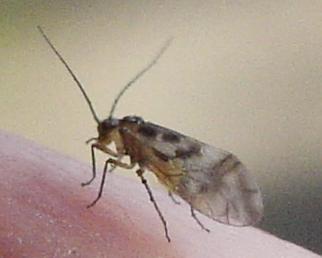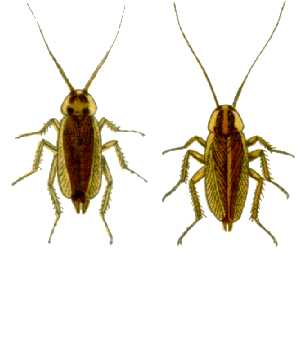
A pest is any animal or plant harmful to humans or human concerns. The term is particularly used for creatures that damage crops, livestock, and forestry or cause a nuisance to people, especially in their homes. Humans have modified the environment for their own purposes and are intolerant of other creatures occupying the same space when their activities impact adversely on human objectives. Thus, an elephant is unobjectionable in its natural habitat but a pest when it tramples crops.

Integrated pest management (IPM), also known as integrated pest control (IPC) is a broad-based approach that integrates practices for economic control of pests. IPM aims to suppress pest populations below the economic injury level (EIL). The UN's Food and Agriculture Organization defines IPM as "the careful consideration of all available pest control techniques and subsequent integration of appropriate measures that discourage the development of pest populations and keep pesticides and other interventions to levels that are economically justified and reduce or minimize risks to human health and the environment. IPM emphasizes the growth of a healthy crop with the least possible disruption to agro-ecosystems and encourages natural pest control mechanisms." Entomologists and ecologists have urged the adoption of IPM pest control since the 1970s. IPM allows for safer pest control.

Bookworm is a general name for any insect that is said to bore through books.

Pest control is the regulation or management of a species defined as a pest, a member of the animal kingdom that impacts adversely on human activities. The human response depends on the importance of the damage done and will range from tolerance, through deterrence and management, to attempts to completely eradicate the pest. Pest control measures may be performed as part of an integrated pest management strategy.
Forest integrated pest management or Forest IPM is the practice of monitoring and managing pest and environmental information with pest control methods to prevent pest damage to forests and forest habitats by the most economical means. Forest IPM practices vary from region to region and particularly by state, according to the habitat and forests present. Forest integrated pest management or Forest IPM combines cultural, biological and chemical technologies to reduce pest damage to levels below those that of economic damage. Forest IPM is utilized for the whole life of the tree, from site prep to harvest. An IPM treatment is utilized before the cost of the treatment is equal to the reduction in crop value due to past injury, which is called the economic injury level. Forest integrated pest management has a strong emphasis on intensive forest management.
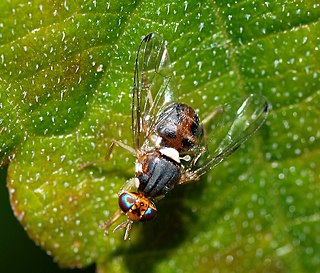
The olive fruit fly is a species of fruit fly, which belongs to the subfamily Dacinae. It is a phytophagous species, whose larvae feed on the fruit of olive trees, hence the common name. It is considered a serious pest in the cultivation of olives.
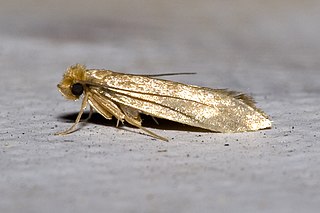
Tineola bisselliella, known as the common clothes moth, webbing clothes moth, or simply clothing moth, is a species of fungus moth. It is the type species of its genus Tineola and was first described by Arvid David Hummel in 1823. The specific name is commonly misspelled biselliella – for example by G. A. W. Herrich-Schäffer, when he established Tineola in 1853.

The conservation and restoration of textiles refers to the processes by which textiles are cared for and maintained to be preserved from future damage. The field falls under the category of art conservation as well as library preservation, depending on the type of collection. In this case, the concept of textile preservation applies to a wide range of artifacts, including tapestries, carpets, quilts, clothing, flags and curtains, as well as objects which ‘’contain’’ textiles, such as upholstered furniture, dolls, and accessories such as fans, parasols, gloves and hats or bonnets. Many of these artifacts require specialized care, often by a professional conservator.
Home-stored product entomology is the study of insects which infest foodstuffs stored in the home. It deals with the prevention, detection and eradication of the pests. The five major categories of insects considered in this article are flour beetles, the drugstore beetle, the sawtoothed grain beetle, the Indianmeal moth and fruit flies.

Collections care, which is sometimes called preventive conservation, involves any actions taken to prevent or delay the deterioration of cultural heritage. The primary goal is to identify and reduce potential hazards to heritage with thoughtful control of their surroundings. The professions most influenced by collections care include conservator-restorers, curators, collection managers, and registrars.
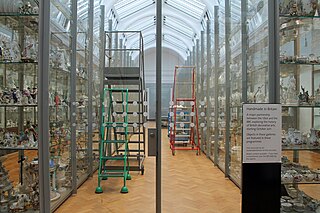
Collection maintenance is a form of collections care that consists of the day-to-day hands on care of collections and cultural heritage. The primary goal of collections maintenance is to prevent further decay of cultural heritage by ensuring proper storage and upkeep including performing regular housekeeping of the spaces and objects and monitoring and controlling storage and gallery environments. Collections maintenance is closely linked to collections care and collections management. The professionals most involved with collections maintenance include collection managers, registrars, and archivists, depending on the size and scope of the institution. Collections maintenance takes place in two primary areas of the museum: storage areas and display areas.
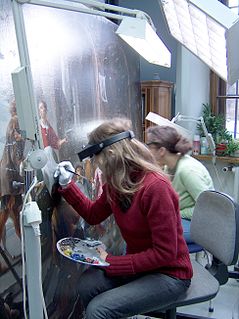
A paintings conservator is an individual responsible for protecting cultural heritage in the form of painted works of art. These individuals are most often under the employ of museums, conservation centers, or other cultural institutions. They oversee the physical care of collections, and are trained in chemistry and practical application of techniques for repairing and restoring paintings.
Emergency response , refers to the measures taken to prepare for and respond to crisis situations that endanger collections, people, and building structures. Common types of emergencies include natural disasters, pests, terrorism, war, and theft or vandalism. These conditions make up 5 of the 10 primary agents of deterioration that effect the longevity of museum collections.
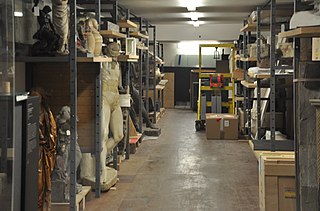
The storage of cultural heritage objects typically falls to the responsibility of cultural heritage institutions, or individuals. The proper storage of these objects can help to ensure a longer lifespan for the object with minimal damage or degradation. With so many different types of artifacts, materials, and combinations of materials, keepers of these artifacts often have considerable knowledge of the best practices in storing these objects to preserve their original state.

The conservation and restoration of flags and banners is the process by which conservators work to preserve and restore flags and banners from future deterioration and damage. As a part of Conservation of Textiles, flag and banner conservation require the care of a skilled and well trained textile conservator, specifically trained in historical materials.

The conservation and restoration of feathers is the practice of maintaining and preserving feathers or featherwork objects, and requires knowledge of feather anatomy, properties, specialized care procedures, and environmental influences. This practice may be approached through preventive and/or interventive techniques.
The conservation and restoration of fur objects is the preservation and protection of objects made from or containing fur. These pieces can include personal items like fur clothing or objects of cultural heritage that are housed in museums and collections. When dealing with the latter, a conservator-restorer often handles their care, whereas, for the public, professional furriers can be found in many neighborhoods.

Conservation-restoration of bone, horn, and antler objects involves the processes by which the deterioration of objects either containing or made from bone, horn, and antler is contained and prevented. Their use has been documented throughout history in many societal groups as these materials are durable, plentiful, versatile, and naturally occurring/replenishing.
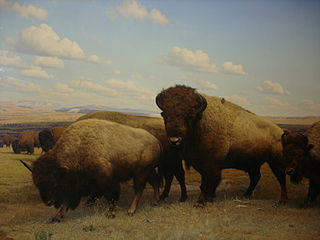
The conservation of taxidermy is the ongoing maintenance and preservation of zoological specimens that have been mounted or stuffed for display and study. Taxidermy specimens contain a variety of organic materials, such as fur, bone, feathers, skin, and wood, as well as inorganic materials, such as burlap, glass, and foam. Due to their composite nature, taxidermy specimens require special care and conservation treatments for the different materials.

The conservation and restoration of insect specimens is the process of caring for and preserving insects as a part of a collection. Conservation concerns begin at collection and continue through preparation, storage, examination, documentation, research and treatment when restoration is needed.

